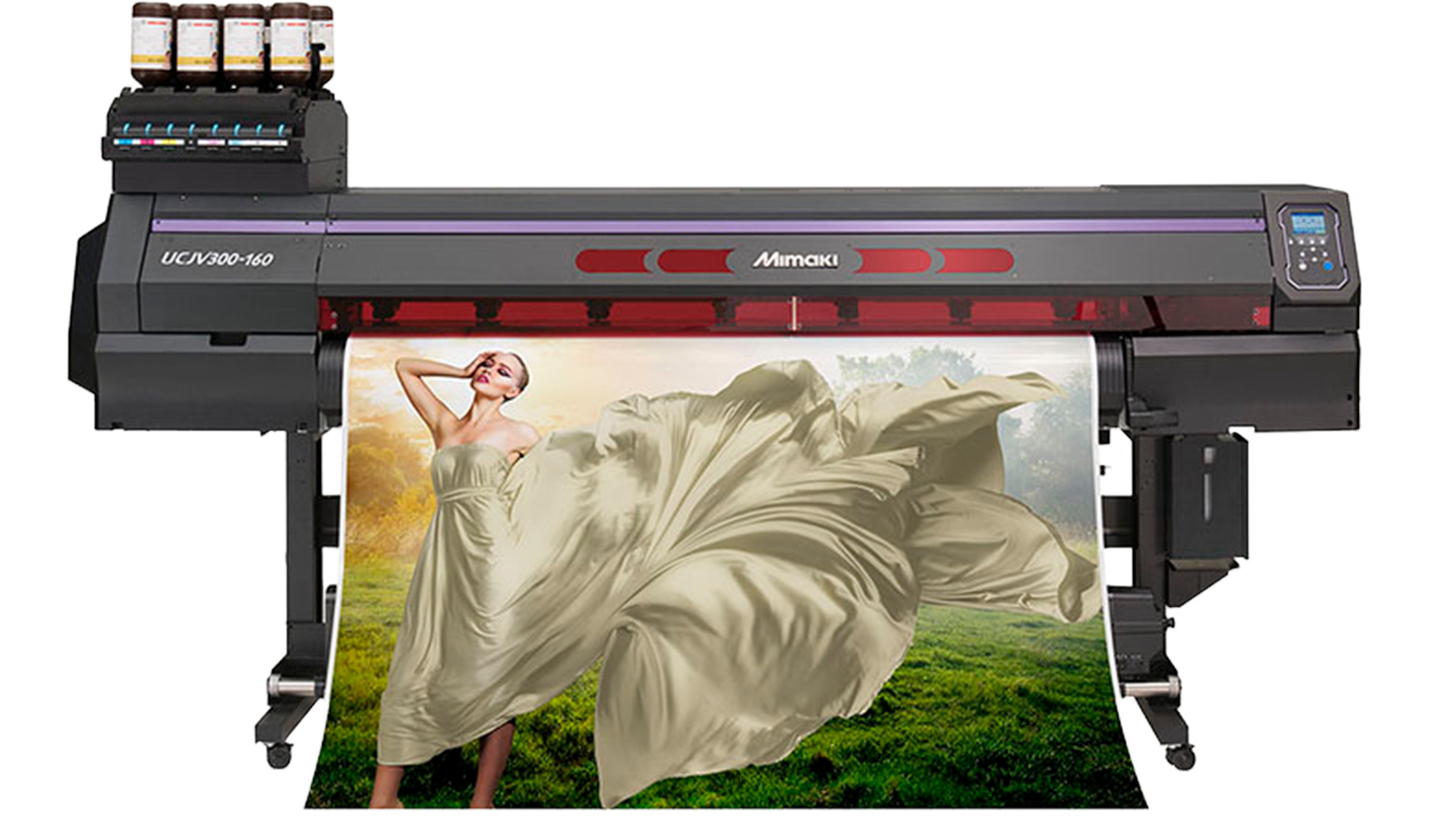Machine Spotlight - New Mimaki 1600mm roll to roll UV printer
Sometimes what’s needed is a machine that fills a very particular niche in our workflow.
Our new £20k Mimaki UCJV300 1600mm roll-to-roll UV is one of those machines. It’s not that big, it doesn’t boast many special features, but it combines three features to make it indispensable.
The Mimaki has a built-in cutter, so it can print and cut in one operation. It’s a UV printer, so the prints are cured instantly, which means no out-gassing (common with solvent technology) is needed. And it’s a roll-to-roll printer, meaning it’s terrifically compact for its print width.
Printed vinyls are a standard product, a stock in trade that we need to be able to produce quickly and efficiently, and until now we’ve been printing our vinyls on one of our other roll-fed solvent printers.
These printed vinyls require lamination before cutting on the Kongsberg C-series cutting table, making printed vinyls a three step process. Also, the Kongsberg is so capable and versatile that using it to cut simple printed vinyls is extravagant, when we need it for complex cutting of printed stretch fabrics.
The Mimaki can print and cut vinyls all day, at speeds of up to 24m2/hour, collecting the output from multiple print jobs on one roll. This frees up Ottimo staff to focus on other work, and liberates the Kongsberg from time-consuming and menial vinyl cutting tasks. The result has already been a noticeable improvement in workflow and efficiency.
It’s optimised for unattended operation and minimum environmental impact, and has been built to run continuously. The feed and collection mechanisms can hold rolls of vinyl up to 45kg (240m2!) and the ink bottles are replenishable 1 litre containers, needing less frequent refilling and maintenance.
It goes to show that it isn’t always the most expensive machine that has the biggest impact on your business. A relatively modest investment like this Mimaki unit will, for us in particular, increase efficiency, but it doesn’t deliver anything new. It simply makes the workflow faster and better, helping to increase our overall scope and scale.

